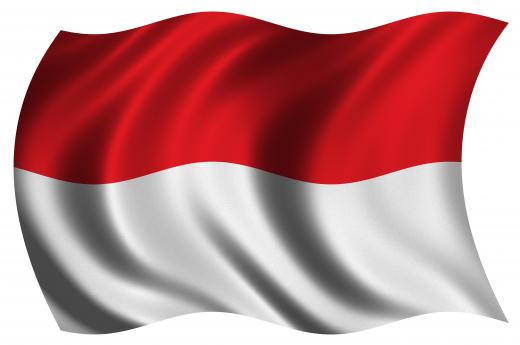What is the Wallace Line?
 Michael Anissimov
Michael Anissimov
The Wallace Line is an imaginary line in Indonesia between Borneo and the island to its immediate east, Sulawesi. The line has ecological significance because it separates two zoogeological regions that are respectively associated with Asia and Australia. To the west of the line, fauna is more Asian. To its east, it more closely resembles the Australian fauna. The reason for the line is a deep oceanic trench that has preserved the gulf between these two islands for millions of years. Without it, they would have been periodically connected as Ice Ages caused the sea level to lower by as much as 120 meters (394 ft), connecting together Borneo with the Asian mainland and Sulawesi with Australia.
The region around the Wallace Line is often considered among the most ecologically diverse in the world, alongside the Amazon Rainforest and Congo Rainforest. This region adjacent to the Wallace Line is often called Wallacea. The region is home to over 10,000 plant species, 15% of which are endemic, and 1142 terrestrial vertebrate species, of which about half (529) are endemic. These endemic vertebrate species include seven species of macaque monkey, five species of tarsier, two species of anoa (a rare subgenus of buaffalo), and the babirusa (a pig-like animal with two sets of curved horns).

The entire area within 1,000 miles of the Wallace Line on either side is a huge biodiversity hotspot. On Borneo in the west, there are orangutans, countless birds and monkeys, numerous bats, and the world's only lungless frog. On Sumatra and Java to the west and south of Borneo, there are tigers, rhinos, tapirs, bears, and a leopard found nowhere else. Meanwhile, in New Guinea, the largest island to the east of the Wallace Line, there is an entirely different fauna, absent of all mammals except for rodents and bats. The large mammals are all marsupials (like the arboreal Tree-kangaroos). Due to an absence of large mammalian predators, a few islands are inhabited by the man-sized Komodo Dragon, the largest lizard on Earth, which is an apex predator here.
AS FEATURED ON:
AS FEATURED ON:

















Discussion Comments
Why is there a huge difference in diversity? What causes it?
Is the wallace line applicable to flora biodiversity?
I find it interesting how ecological isolation creates such functional diversity within species. I used to live in Hawaii, and many of the plant and animal species are endemic to those islands. Because the islands are geologically young, many of the plant and insect species display relatively prehistoric features.
There are touch sensitive plants that will close their fronds as you move your hand across them. The islands also have ferns that can grow to twenty feet tall, spiders that glow in the dark, and white flowers with glass like thorns in the pistils, among other things. When I was a kid, I used to walk through the bushes on the island pretending I was a prehistoric hunter searching for long extinct animals.
@ Istria- I find what you say to be very interesting. I wonder if the evolution of Russian and North American brown bears is an example of parallel evolution.
I once read about the parallel evolution of marsupial and placental animals in South America, The Old World, and Australia. When these continents split 100 million years ago, the species on each landmass evolved into similar species that had completely different reproductive systems. In Australia, the marsupials became the dominant species, while the rest of the old world saw the rise of placental species. In South America, the proliferation of both types of animals was present. An example of a specific species is the saber tooth tiger of Europe and the marsupial saber tooth of South America. These species were very similar, yet they evolved with completely different reproductive systems. Could this be the same for North American and Russian species?
I had never heard of the Wallace line before reading this article. I find it interesting that there is such a marked difference between the species that lie on opposite sides of the Wallace line. It makes sense though. It also explains why some of the animals that inhabit parts of Russia are so similar to the some of the animals that inhabit North America. Grizzly bears, wolves, rabbits, deer, and so many other animals are similar even though they are on other sides of the world.
I imagine that their similarities are due to the fact that the two continents were connected by ice bridges at various times in history. This must have enabled many of these animals to migrate across continents. It seems like unless there is some type of impassable land barrier, or species have small habitat ranges than few species are endemic to only one continent or region. This is just an idea. Does anyone else have any thoughts?
Post your comments